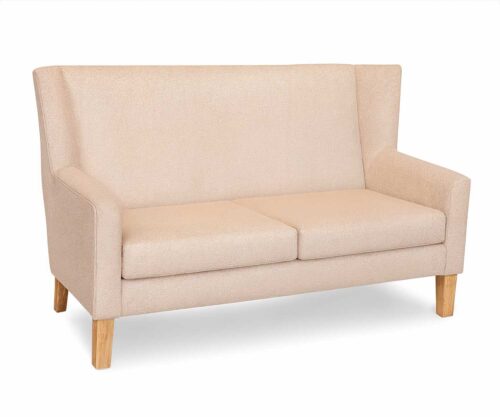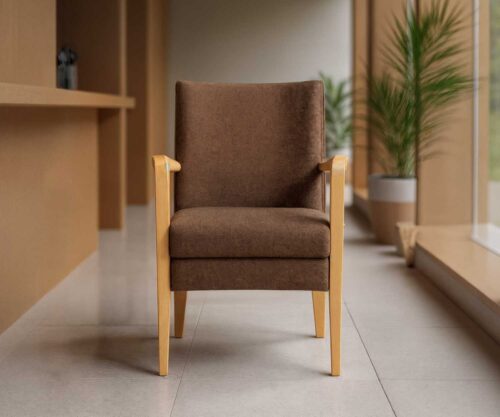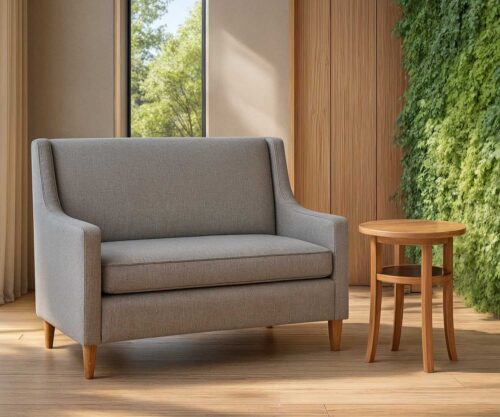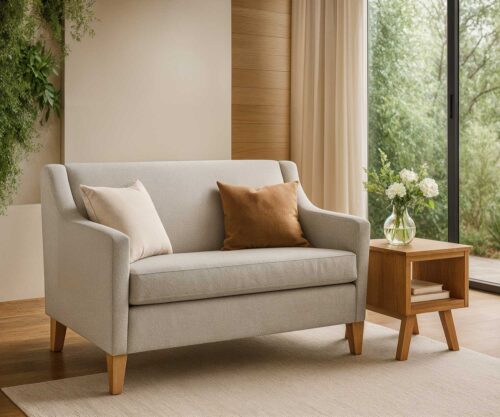Aged Care Chairs: Frequently Asked Questions

When it comes to aged care furniture, chairs play a critical role in the everyday life of aged care residents. They provide comfort, support and mobility that elderly people need. As a facility manager, selecting the right chairs for your residents should be a top priority. However, with so many options available on the market, it can be challenging to decide which chairs to choose.
Let's take a look at some of the frequently asked questions regarding aged care chairs to help you make an informed decision.
1. What are the features of an ideal aged care chair?
An ideal chair for an elderly person should be comfortable, supportive and have a range of adjustments to meet the specific needs of its users. The chair should be easy to operate and manoeuvre, have a sturdy frame, be made of durable and high-quality material, and should have removable and easy-to-clean covers. It should also come with safety features, such as brakes and footrests, to prevent falls.
2. What types of aged care chairs are available?
There are various types of chairs available to help aged care residents, including lift chairs, recliners, high back armchairs, bariatric chairs and tilt-in-space chairs. Lift chairs assist elderly people with mobility issues to stand up from a seated position, while recliners provide comfort and support for those who spend a lot of time in a sitting position. High back chairs offer additional head support, while bariatric chairs are designed for people with larger body types. Tilt-in-space chairs allow users to adjust their sitting position while remaining in the chair.
3. How do I assess the comfort and fit of an aged care chair?
It is essential to assess the comfort and fit of a chair for an elderly person before purchasing it. Have the resident sit in the chair for an extended period to determine the level of comfort and assess whether the chair supports their body type correctly. Check that the chair's dimensions, such as seat height and width, are suitable for the user. Consider the user's mobility needs and determine whether the chair's features, such as footrests and brakes, meet their requirements.
4. How do I maintain and care for chairs in aged care?
Maintaining and caring for these chairs is crucial to ensure longevity and hygiene. Regular cleaning and disinfecting of the chairs and covers are necessary to prevent the spread of germs and bacteria. Ensure that the chairs are kept in good working order and promptly address any faults or damages. Regular inspections and servicing of aged care chairs can help detect any issues before they escalate.
5. What is the cost of aged care chairs?
The cost varies depending on the type of chair, the features, and the quality. Generally, lift chairs, recliners and high back chairs are the most affordable options, while tilt-in-space and bariatric chairs can be more expensive. However, it is important to remember that investing in high-quality aged care chairs can save costs in the long run by reducing the need for repairs or replacements.
6. Can aged care chairs be cleaned and sanitized easily?
Yes, they can be easily cleaned and sanitized to prevent the spread of infection and maintain a hygienic environment in the facility. Most chairs can be wiped down with a disinfectant spray or solution, and the cushions and covers can be removed and washed in a machine. It's essential to follow the manufacturer's instructions for cleaning and maintenance and ensure that the cleaning products used are safe and effective.
7. How often should aged care chairs be replaced?
The lifespan of an aged care chair can vary depending on the usage, maintenance, and quality of the chair. Generally, most chairs will last between 5-10 years with proper care and maintenance. However, it's essential to inspect the chairs regularly for signs of wear and tear, such as broken or loose parts, sagging cushions, or torn covers. If any of the chairs are damaged or no longer provide adequate support, they should be replaced immediately to prevent injuries to the residents.
8. What are the benefits of investing in high-quality aged care chairs?
Investing in high-quality aged care furniture can provide several benefits for the residents and the facility. It can improve the quality of life for the residents by providing comfort, reducing the risk of falls and injuries, and promoting independence and mobility. It can also enhance the reputation of the facility by providing a safe and comfortable environment for the residents. Additionally, high-quality chairs can reduce the long-term costs of the facility by reducing the frequency of replacements and repairs.
Choosing the right aged care chairs for residents in your facility requires careful consideration and assessment of their needs. It's essential to select comfortable, supportive, and adjustable chairs with safety features to ensure their safety and wellbeing. Regular maintenance and care of aged care chairs can prolong their lifespan and enhance hygiene standards. By providing top-quality chairs to your residents, you can improve their quality of life and ensure their comfort and safety.
Australian Made Aged Care Chairs
A selection of our finest aged care chairs made right here in our Brisbane furniture manufacturing facility. These fit-for-purpose chairs have been designed and built to promote the comfort and safety of elderly Australians.
More News
Aged Care Chairs: Frequently Asked Questions

When it comes to aged care furniture, chairs play a critical role in the everyday life of aged care residents. They provide comfort, support and mobility that elderly people need. As a facility manager, selecting the right chairs for your residents should be a top priority. However, with so many options available on the market, it can be challenging to decide which chairs to choose.
Let's take a look at some of the frequently asked questions regarding aged care chairs to help you make an informed decision.
1. What are the features of an ideal aged care chair?
An ideal chair for an elderly person should be comfortable, supportive and have a range of adjustments to meet the specific needs of its users. The chair should be easy to operate and manoeuvre, have a sturdy frame, be made of durable and high-quality material, and should have removable and easy-to-clean covers. It should also come with safety features, such as brakes and footrests, to prevent falls.
2. What types of aged care chairs are available?
There are various types of chairs available to help aged care residents, including lift chairs, recliners, high back armchairs, bariatric chairs and tilt-in-space chairs. Lift chairs assist elderly people with mobility issues to stand up from a seated position, while recliners provide comfort and support for those who spend a lot of time in a sitting position. High back chairs offer additional head support, while bariatric chairs are designed for people with larger body types. Tilt-in-space chairs allow users to adjust their sitting position while remaining in the chair.
3. How do I assess the comfort and fit of an aged care chair?
It is essential to assess the comfort and fit of a chair for an elderly person before purchasing it. Have the resident sit in the chair for an extended period to determine the level of comfort and assess whether the chair supports their body type correctly. Check that the chair's dimensions, such as seat height and width, are suitable for the user. Consider the user's mobility needs and determine whether the chair's features, such as footrests and brakes, meet their requirements.
4. How do I maintain and care for chairs in aged care?
Maintaining and caring for these chairs is crucial to ensure longevity and hygiene. Regular cleaning and disinfecting of the chairs and covers are necessary to prevent the spread of germs and bacteria. Ensure that the chairs are kept in good working order and promptly address any faults or damages. Regular inspections and servicing of aged care chairs can help detect any issues before they escalate.
5. What is the cost of aged care chairs?
The cost varies depending on the type of chair, the features, and the quality. Generally, lift chairs, recliners and high back chairs are the most affordable options, while tilt-in-space and bariatric chairs can be more expensive. However, it is important to remember that investing in high-quality aged care chairs can save costs in the long run by reducing the need for repairs or replacements.
6. Can aged care chairs be cleaned and sanitized easily?
Yes, they can be easily cleaned and sanitized to prevent the spread of infection and maintain a hygienic environment in the facility. Most chairs can be wiped down with a disinfectant spray or solution, and the cushions and covers can be removed and washed in a machine. It's essential to follow the manufacturer's instructions for cleaning and maintenance and ensure that the cleaning products used are safe and effective.
7. How often should aged care chairs be replaced?
The lifespan of an aged care chair can vary depending on the usage, maintenance, and quality of the chair. Generally, most chairs will last between 5-10 years with proper care and maintenance. However, it's essential to inspect the chairs regularly for signs of wear and tear, such as broken or loose parts, sagging cushions, or torn covers. If any of the chairs are damaged or no longer provide adequate support, they should be replaced immediately to prevent injuries to the residents.
8. What are the benefits of investing in high-quality aged care chairs?
Investing in high-quality aged care furniture can provide several benefits for the residents and the facility. It can improve the quality of life for the residents by providing comfort, reducing the risk of falls and injuries, and promoting independence and mobility. It can also enhance the reputation of the facility by providing a safe and comfortable environment for the residents. Additionally, high-quality chairs can reduce the long-term costs of the facility by reducing the frequency of replacements and repairs.
Choosing the right aged care chairs for residents in your facility requires careful consideration and assessment of their needs. It's essential to select comfortable, supportive, and adjustable chairs with safety features to ensure their safety and wellbeing. Regular maintenance and care of aged care chairs can prolong their lifespan and enhance hygiene standards. By providing top-quality chairs to your residents, you can improve their quality of life and ensure their comfort and safety.
Australian Made Aged Care Chairs
A selection of our finest aged care chairs made right here in our Brisbane furniture manufacturing facility. These fit-for-purpose chairs have been designed and built to promote the comfort and safety of elderly Australians.
Commercial furniture by room
Based in Brisbane, we're an Australian manufacturer of aged care furniture, retirement living furniture, hospital & healthcare furniture, hotel & accommodation furniture and student accommodation furniture. We also supply a range of commercial office furniture.
Discover the FHG Look Book: Your Source of Inspiration for Quality Australian-Made Commercial Furniture
- Quality Craftsmanship: See why we've been a trusted partner for over 25 years.
- Local Excellence: Learn how our Brisbane team ensures the highest standards.
- Inspiration and Ideas: Find innovative furniture solutions for any environment.
Don't miss the opportunity to transform your commercial space with FHG's expertly crafted furniture. Download the FHG Look Book today and start your journey towards exceptional design and quality.
























